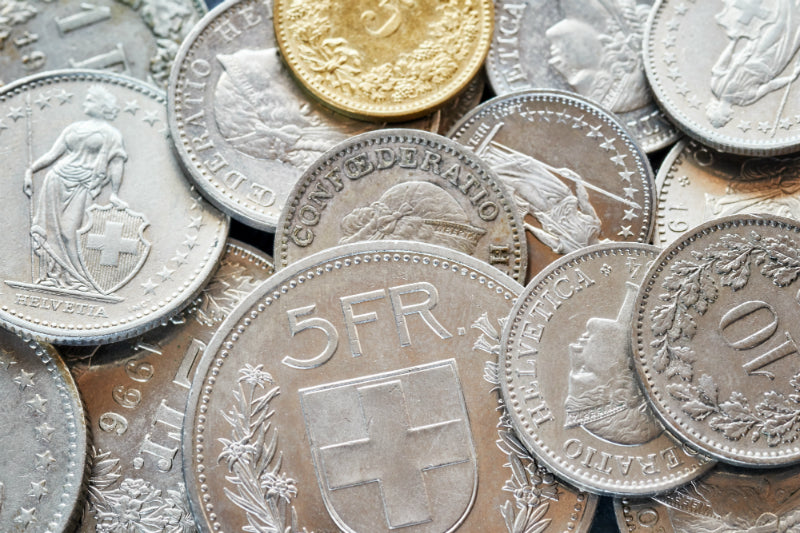" Great storage for the first small fortune "
The little boy proudly holds his first coin in his hands. His eyes light up and full of awe, he puts the coin into the cash box. It is the first one he has received as a gift and there are many more to come. Young children certainly do not yet understand all the important connections that exist around the topic of money. But they are well aware that it is a nice thing to collect small coins and save up for them.
The first money box - cash box for children
A money box for children is important, as it allows the little ones to store their first real treasure. It certainly takes some time, but little by little more coins are collected and the sound of the money box being gently shaken will be remembered for a long time. The fuller the money box became, the more intense the sound became when it was shaken. From initially light tones to a full, almost muffled sound. The time was approaching for it to be emptied.

For the children, the process is exciting and every coin, no matter how small, finds its way into the money box. It is also a wonderful time for you as parents, because now you can gradually start to teach your offspring what it means to save. Learning how to handle money is of course important and lays an essential foundation for how it will be handled later as an adult.
Did you already know?
As early as the 2nd century BC, finds show that people put their coins aside and actually collected them in containers that are comparable to modern money boxes. It is therefore both a cultural and historical tradition.

Beautiful selection: A money box for children with a personalized design
Today, a children's money box doesn't just look stylish. They can even be personalized. In other words, you too can money boxes with the names of your children. First of all, however, you need to choose the right motif for the money box. It is not uncommon to be faced with a large selection. Whether animals, stars or rockets. There is a suitable design for every child. Of course, you will experience the unforgettable sound of the coins being inserted with every money box.

Gift tip:
Are you still on the lookout for a pretty children's or baby gift for a birthday or first day at school? How about a money box for children? Even if they already have a cash box. A second one never hurts. One money box can be used to save pocket money later and the other children's money box can be used to collect gifts of money. This is another way for younger children to learn how to handle money.

Role model function: thrifty parents as a role model
Parents sometimes fail to realize that they have a major role model function. It is not only their upbringing that shapes their children. The interaction within the family is also crucial. This also applies to how money is handled. It has been proven that teenagers and young adults are much better at dealing with finances if they have learned how to do so from their parents. Learning to save money starts at an early age. Even if the comprehensive knowledge about it cannot yet be taught. The sooner toddlers learn that the cuddly toy or the delicious sweets must of course be paid for with money, they will also understand that the children's purse may have to be emptied for special wishes. The following tips will help you as parents to deal with the topic of money in an age-appropriate way.

Frugal parents as a model
Income and expenditure
Explain briefly and with as few technical terms as possible that money is earned month after month and that this is spent on very different things. It is important here that not all the money is only used for nice things. In order to be able to afford something out of the ordinary, you have to save. It's a good thing that mom and dad also have a little cash box. It is certainly an advantage if you have a small money box somewhere that you can put something in from time to time. That way, your offspring will see that you also have to wait a little until you can fulfill a wish.

No advances
"But I want the game now!" At some point, parents will be confronted with a situation like this. Remain strict and consistent. You will not receive any advances either. Some wishes need patience and time.

Wishes need time!
The sense of saving can be explained well when the full money box is emptied and then a toy or a nice book is bought with the child. This teaches your child that it is worth being patient and saving up for something nice.

Wishes take time
Lending and giving - giving the gift of little friends
There's certainly nothing wrong with your offspring wanting to buy their best friend an ice cream. This is also part of explaining the topic of money to children. It is certainly a wonderful experience to see their eyes light up and both of them lick the ice cream with relish. In return, it is all the more pleasing when your friend gives you a round of jelly babies on your next visit.

Pocket money: From what age and how much should pocket money be paid?
Whether there should be pocket money or not should not be up for debate. Rather the amount. This will of course depend on the family's income and should be in a healthy proportion. Even if you are in a position to pay significantly more pocket money, it is better to stick to the guidelines. Experts advise paying pocket money to children when they start school. Initially on a weekly basis:
- School year: 1 franc
- School year: 2 francs
- School year: 3 francs
- School year: 4 francs

Little boy with 20 francs
- From Year 5 onwards, you can switch to a monthly payment. This averages between 25 and 30 francs.
- and 8th school year 30 to 50 francs
- From the 10th grade between 50 and 80 francs
In principle, children are free to dispose of their pocket money as they wish. This is the only way to teach them how to handle money properly, and with a money box for children you are laying a first foundation stone to a certain extent.










